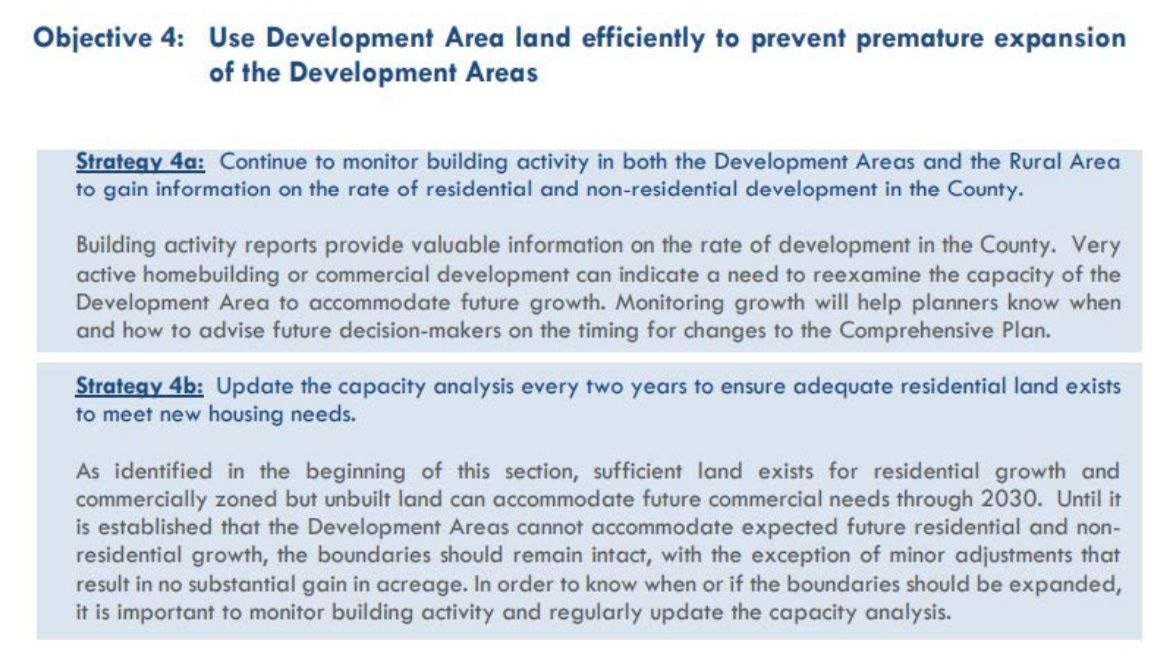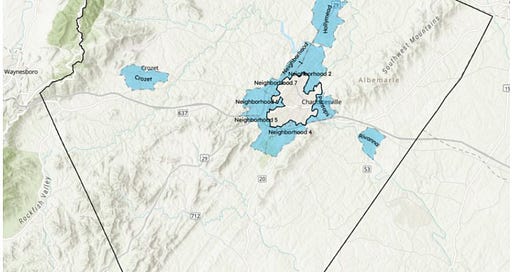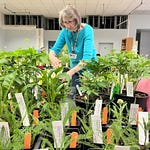You are getting very, very sleepy, but it’s for your own good. At least, that’s the sort of thing you might hear on Health and Happiness With Hypnosis Day celebrated each July 25. Yet, Charlottesville Community Engagement has no capacity to consider or capture the medical status of the hundreds of readers and listeners. I’m Sean Tubbs and I am hopeful that you’re taking care of yourself.
On today’s show:
The latest campaign reports are in for local races covering a three week period in June
The State Corporation Commission is taking public comments on proposed increases to fees charged by Dominion Energy
Albemarle County’s community advisory committees get a virtual briefing on the Comprehensive Plan and potential criteria to expand
First shout-out: WTJU staging the Cville Puzzle Hunt on August 26
In today’s first Patreon-fueled shout-out: By now, readers and listeners know WTJU’s position on algorithms. But do you know that the radio station celebrates puzzles? In fact, on Saturday, August 26, WTJU is organizing the second annual Cville Puzzle Hunt, a huge, cerebral puzzle that will spool out across downtown Charlottesville.
The Cville Puzzle Hunt will take you and a team of friends on a wild afternoon running around trying to untangle five diabolical, large-scale puzzles inserted into the urban landscape. The opening clue will be read at 3 p.m. at the Ix Art Park. Find out more about this WTJU-organized event at cvillepuzzlehunt.com.
Fadeley raised most money among Albemarle Supervisor candidates in latest reporting period
There are 59 days until early voting begins in Virginia and 105 days until the count begins for all votes. Last week, campaigns had to report their campaign activity through June 30. That includes those that didn’t win election to the ballot in the June 20 primary.
There are two contested races for the Albemarle Board of Supervisors and one open seat that will likely go to the only person on the ballot unless someone mounts a write-in campaign.
In the Rivanna District, incumbent Democrat Bea LaPisto-Kirtley faces independent challenger T.J. Fadeley. A third candidate, David Rhodes, has dropped out of the race and has endorsed Fadeley.
This was the first campaign finance report for Fadeley who raised $6,700 through June 30 with 15 contributions over $100. One of them is a $500 contribution from Michael Johnson. Johnson ran a write-in campaign against LaPisto-Kirtley in 2019 and got about a third of the vote and raised $99,336.
Fadeley spent $4,445 during the period and had a balance of $2,254.
This reporting deadline covered activity between June 9 and June 30. LaPisto-Kirtley began that period with a starting balance of $8,523 and raised $5,500 from two donors including one $5,000 contribution from Tiger Lily Capital LLC. She spend $2,019 during the period to have an ending balance of $11,734.
In the White Hall District, independent Brad Rykal is challenging incumbent Democrat Ann Mallek.
Mallek only raised $75 in the period and spent no money. That leaves the campaign with $18,539 in the bank as of June 30.
Rykal began the period with $3,384 and raised $175. The campaign spent $1,785 in the period to have an ending balance of $1,774.
Democrat Mike Pruitt is running unopposed in a bid to succeed Donna Price as the Scottsville District representative on the Albemarle Board of Supervisors. He began the period with $4,939 and raised $1,118 including $81 in in-kind expenses.
Bryce continues to lead fundraising for Albemarle School Board
There are a total of four races for the Albemarle School Board this year but only two of them have more than one candidate.
Like the Albemarle Planning Commission, the School Board has seven seats with one person representing the entire county at-large. Newcomers Meg Bryce and Allison Spillman are both seeking to replace Jonno Alcaro.
Bryce’s father is the late Supreme Court Justice Antonin Scalia. The candidate began the period with $27,717 on hand and raised another $5,950. The campaign spent $3,416 and had $30,251 on hand as of June 30.
Spillman started off with $9,872 on the morning of June 9 and raised $1,108 including $510 in in-kind expenses. The campaign spent a total of $1,992 and ended the period with a balance of $8,987.
The other contested race is in the White Hall District where incumbent Rebecca Berlin faces a challenge from Joann McDermid.
Berlin was appointed to the seat last year to replace David Oberg who resigned before completing the term. She raised no money in the period and spent $934 in the campaign to have a balance of $965.
McDermid began the period with $5,204 in the bank and raised $600. Her campaign spent $3,253 to have a balance of $2,551.
Incumbent Judy Le is running unopposed in the Rivanna District and raised $461 and spent $293 to end the period with $167 in the bank.
Ellen Osborne faces no challenger in her campaign for a second term to represent Scottsville on the Albemarle School Board. Osborne began with $561 in the bank on June 9, raised $425, and spent $280.
The next filing deadline is September 15, 2023 for activity between July 1 and August 31. That’s now!
Public comments sought for Dominion Energy rate review including charge to opt out of smart meters
Every two years, the State Corporation Commission scrutinizes the rates and fees Dominion Energy Virginia charges its customers.
“In the review, the SCC will analyze the company’s base rates, which account for approximately half of a customer’s monthly bill, as well as the terms and conditions for the provision of generation, distribution and transmission services,” reads a press release sent out by the SCC on Friday.
As part of the process, Virginians are invited to offer comment in a variety of ways including telephone, in person, or in writing.
Dominion is seeking changes as part of the review. For instance, they are seeking permission to charge customers who opt out of smart meters $10.35 a month. They also want to increase the monthly customer charge from $7.58 to $9.05.
Written comments can be made through November 20 through the SCC website. If you click here, it is at the bottom of a long list of other items pending before the SCC.
In today’s second subscriber supported shout-out, since the pandemic the Albemarle-Charlottesville Historical Society has expanded its programming with all sorts of talks and presentations made available on-line and in-person. Many of these events are on their YouTube channel.
Most recently the ACHS invited Dr. Kathryn Roe Coker to present on the prisoner of war camps that held German and Italian prisoned during the Second World War. They lived in more than twenty camps across the state and worked on five military installations. Farmers hired POWs to pick apples. Fertilizer companies, lumberyards and hospitals hired them. You can learn more about this time period on an hour-long presentation available below:
To expand growth areas or not to expand? Albemarle CAC members weigh in
Albemarle County is in the middle of a review of its Comprehensive Plan through a process known as AC44. The update is currently in phase two and the process is intended to help prepare Albemarle for a population with significantly more people.
The Weldon Cooper Center for Public Service at the University of Virginia projects a 2040 population of 138,523 with that climbing to 155,102 ten years later. That’s up from a current estimate of 115,495 in July 2022.
Since a countywide rezoning in 1980, Albemarle’s growth management plan has permitted and encouraged development to be within roughly five percent of the county’s 726 square miles. These have master plans and each of those is to be overseen by an advisory body known as a “community advisory committee” or CAC.

On July 12, 2023, Albemarle County held a virtual meeting with all of CAC’s.
“Welcome everyone,” said Serena Gruia, the public engagement coordinator for Albemarle County. “We’re going to get started shortly here.”
A meeting for the Comprehensive Plan began with a definition of a Comprehensive Plan.
“The Comprehensive Plan is a 20-year guiding document that describes our community’s vision for the future,” said Tori Kanellopoulos, a principal planner in the county’s community development department. “It includes the recreation, transportation, housing, and job opportunities we want to see. The comp plan is used to inform decisions on funding, plans and programs, capital projects, and review of certain applications. It guides where new development occurs and where public services and amenities are provided.”
The entire AC44 update is expected to be completed by late 2024. A major thrust of this review is to update the document based on direction from other approved documents such as Housing Albemarle, the Climate Action Plan, and the Project Enable economic development plan.
The first phase of the plan resulted in something called the Framework for an Equitable and Resilient Community which Kanellopoulos said will guide development of the goals, objectives and action items that will end up in the finished Comprehensive Plan.
About 650 people responded to the first public engagement of the second phase, as I reported last month. The county now seeks input on what they’re calling tool kits on four specific areas.
Let’s hear more definitions of what those actually mean.
“Activity centers are places that have a variety of businesses, services, and housing, either now or in the future, where we can gather, shop, stroll and go to meet our daily needs,” Kanellopoulos said.
These activity centers are separated into “neighborhood”, “town,” and “destination” centers.” These are all expected to be walkable but vary in size.
“Crossroad Communities are places in the rural area that have included a historic small scale commercial center, typically at a road crossing, which may or may not still have active commercial uses or community gathering spaces,” said county planner Ben Holt.
There are currently seven of these in the rural area. They are Advance Mills, Batesville, Covesville, Free Union, Greenwood, Proffitt, and White Hall. Holt said the current zoning code does not have the tools to authorize any new uses. He added there are many other potential locations that could have this designation added to serve as community hubs, mostly around existing institutions such as schools.
“This strategy could support more equitable access to services and amenities in the rural area,” Holt said.
Another item discussed during the work session were rural interstate interchanges which have so far been prevented from further commercial development.
The final toolkit ponders what the county might consider when it’s time to expand the growth area based on a review of how much has been developed over time.
“The 2015 [Comprehensive] Plan estimated that about 11 percent of the development area’s land had capacity for development or redevelopment,” Kanellopoulos said. “With the 2022 land use build out analysis, the estimated remaining development area land is about seven percent.”

Participants in the virtual open house had the opportunity to enter specific rooms to choose one of the four areas to discuss and give their views. The most popular was the one on criteria the growth area expansion.
Kevin McDermott, the acting planning director in Albemarle County, oversees long range planning and transportation. He said the growth area may need to eventually be expanded to provide more places for housing and space for places for people to work. The framework created in the first phase has some guidance for how to proceed.
“That includes identifying natural resources to protect and those are often outside the current growth area so we need to be conscious of that as we’re looking at areas to develop,” McDermott said. “And establish expectations for development patterns so that we know what kind of land uses we’re going to get in those.”
McDermott said factors to be considered include transportation capacity, school capacity, and access to public water and sewer.
“If the area is located in the water supply watershed which was one of the primary considerations when those development areas were initially developed,” McDermott said.
McDermott said there are also several examples of “stale zoning” where uses are allowed outside of the development area but have not yet been built on due to a variety of factors.
A big driver in the AC44 process is the need to implement the Housing Albemarle goal of creating more housing across the county.
“As the cost of housing goes up, we can control some of those factors by allowing additional development that goes beyond the current development area,” McDermott said. “And we don’t want to start losing too many job opportunities in the county because we don’t have places where businesses can come and locate and grow in the county.”
Another issue with the existing development area is that what ends up getting built is often much lower than what could be built under a Comprehensive Plan that allows for significant density if approved by the Board of Supervisors in a legislative action.
“We don’t get new development that builds out to that maximum build out estimate,” McDermott said. “So often times when a developer comes in to rezone land so they can develop it, ultimately they’re not developing it at the 100 percent of what’s allowed. They’re developing it at about 55 to 60 percent of what’s allowed.”
Discussion
Planning Commissioner Lonnie Murray pushed back on the need for additional space saying that Albemarle’s development area is much larger than the total area of the city it surrounds.
“Charlottesville is only ten square miles or approximately 6,500 acres,” Murray said. “Albemarle’s growth area is 23,680 acres, or 3.5 times the size of Charlottesville. If we look at Charlottesville I would say that nobody reasonably believes that Charlottesville has run out of space yet.”
Murray said he wants to see a focus on redevelopment of existing commercial spaces.
Sally Thomas served four terms on the Albemarle Board of Supervisors during an era when economic development was not encouraged by the county government. She said a reason for the development area has been to direct limited resources into a concentrated area in order to make provision of services more likely.
“To have the transportation available for example is much more possible when you’re not stretching out all out across the countryside,” Thomas said. “And it’s pretty well proven that additional development doesn’t guarantee lower cost housing.”
One concern is that if the growth area is expanded prematurely, it will make it less likely that those existing commercial spaces will be redeveloped.
Dick Ruffin, the chair of the Pantops Community Advisory Committee, said he wants the county to come up with incentives to encourage redevelopment of shopping centers.
“We already have some potential commercial spaces which are not being developed,” Ruffin said. “We have a large shopping center which is very poorly developed and much better use could be made of it.”
There’s also the question of when the growth area expanded.
Mary Katherine King of the 5th and Avon Community Advisory Committee said it might take many years for the water and sewer infrastructure to be in place in areas that would need those utilities to support intense uses. She said that’s why it is important to consider the issue now.
“If for example we’re going to expand even a tiny percentage into an area, it could take for the planning and funding of just water up to 20 years to figure it out how to get it to this new area,” King said. “And so if we don’t know where that is and if we don’t have some criteria like we’re developing today to identify where that’s going to be, we’re going to never have the infrastructure needed to have any type of slight increase in development area because there won’t be common facilities.”
King said community members should be thinking several decades ahead to prepare for the future.
“You really have to kind of think about it like what do you children need?” King said. “If I want my children to be able to live in Albemarle County affordably 40 years from now, I strongly believe that it’s our responsibility to talk about this now.”
One speaker who I’ve not yet identified had this comment.
“Not everybody wants to live in a condominium and the kinds of high-rise, semi-high rise development is really not aspirational housing,” the speaker said. “People don’t come in and want to raise a family in a two-bedroom apartment on the fifth floor.”
This person also said that the quality of life of existing residents in the development areas will suffer if there is a push for more density in those areas.
Mary Rice said that expanding the growth area around Crozet would make it a less attractive place for people to live.
“One of the reasons that so many people want to live in the growth area of Crozet is because its surrounded by rural area,” Rice said. “People want that hard edge of being able to just go down the road to the peach orchard. And if you turn the peach orchard into another development its going to be less attractive for people to move there.”
The conversation continues. The Albemarle Planning Commission will take up the issue of the development toolkits at their meeting on August 8.
The third step of the second phase will see the release of drafts goals and objectives for the Comprehensive Plan. Phase three will see the creation of action steps.
Reading material:
Robyn Hadley, dean of students and vice president for student affairs, to leave U.Va. after two years, Ava MacBlane, Cavalier Daily, July 21, 2023
Judge dismisses two counts of lawsuit that would block melting Lee statue, Caroline Hagood, Cavalier Daily, July 21, 2023
Albemarle man charged after fatal shooting on Berkmar Drive, Haley Sandlow, Charlottesville Daily Progress, July 22, 2023
Green Team of Charlottesville students 'speaks for the trees', Haley Sandlow, Charlottesville Daily Progress, July 22, 2023
After success with 'pilot,' Albemarle plans to open second 'high school center', Faith Redd, Charlottesville Daily Progress, July 23, 2023
Litigation over Charlottesville's Lee statue appears to be over, Hawes Spencer, July 24, 2023
Charlottesville company investing millions to expand, add jobs, July 24, 2024, WVIR NBC29
End notes for #559
Huzzah! Another edition is complete and now it’s on to the next one. When will that happen? Hopefully soon. There’s certainly enough to write about and one day I’ll be able to put this work back as my first priority.
But I do thank the many new paid subscribers I’ve picked up in the last couple of weeks, even with my downtime. There’s a lot of people who want to read about what’s happening in the community, and that’s what I have devoted most of my time to now for three years under the moniker of Town Crier Productions.
If you opt to become a paid subscriber, you too can have a first look at property transaction summaries like the one I published yesterday. I am very reluctant to have any paywall, but I do want paid subscribers to get something for their support.
And if you do become a paid subscriber, Ting will match your initial payment.
You may know by now that if you sign up for Ting at this link and enter the promo code COMMUNITY, you’ll get:
Free installation
A second month for free
A $75 gift card to the Downtown Mall
















Share this post